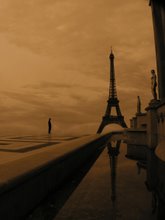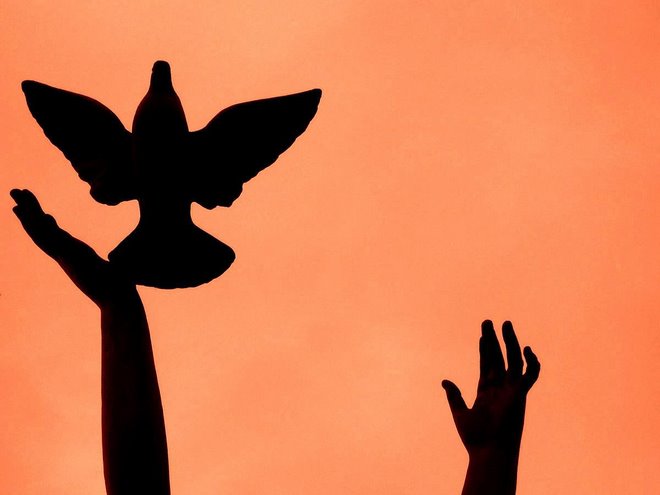Sunday: If you covered 100 km² (39 miles²) of the earth’s land every hour of your life, without sleeping, for 75 years, you wouldn’t even see half of the world.
Monday: It seems that many cultures have a phrase which they say before every meal. From Italian “Boun Appetito!” to Czech “Dobrou Chut’”, even the Japanese “Itadakimas!” The Japanese even add an end-of-meal phrase to the tradition; “Gochisousama!” While this custom is uncommon for English speakers, other cultures follow this tradition almost religiously and find it extremely strange that English speakers have no equivalent, besides some rarely-used phrases such as “Dig in!”
Tuesday: The Great Wall of China is 4,000 miles (6,500 km) long, often nearly 20 feet (6.5 m) high, and wide enough for 6 horses to walk on top side by side. Although it is most likely the largest man-made structure on earth, some well known “facts” about it are not true. The Great Wall is not visible from the moon. It is visible from a low-orbit satellite, but just barely. It is also is not 1000s of years old, since the wall we see today was built mainly in the 1600s or later. The first wall was built about 2200 years ago, but almost nothing of that wall survives today. The Great Wall was not always the strongest symbol of China. Until the 1950s, the wall was a symbol of tyranny and brutality to the Chinese people, and often ignored. Today it is used to display the power and determination of the Chinese people. This is ironic, because although no other nation ever created something similar, the Wall was never at all useful. Two Chinese dynasties, the Ming and Qing, were founded by people who came over the wall.
Wednesday: Two weeks ago was New York City’s annual “No Pants Subway Ride.” It is designed to make people laugh and have an interesting New York experience.
Thursday: A few weeks ago Ethiopia attacked Somolia. This brought up the fact that one of Somalia’s current warlords is a United States Marine! If you’ve seen the movie Black Hawk Down, you know that in 1992-3 the USA was in Somalia trying to kill/capture the leader/warlord Mohammed Aidid, because of his cruel and inhumane treatment of the Somali people. What you don’t know is that before the conflict, Aidid’s son, Hussein Mohamed Farrah, went to America at the age of 14, became a citizen, and eventually joined the Marines. During the fighting, Farrah was accidentally sent to Somalia, but when there was “trouble” with his father the marines moved him to a different country. When Aidid died in 1996 (killed by a competing political group), Somalia asked Farrah to become their next president. Farrah immediately resigned his job with the Marines and accepted the offer, taking the position of his father, the man he was sent to fight a few years earlier. Like his father, Farrah is not clearly accepted as leader of Somalia, and it’s uncertain whether he should be called president or warlord. He’s a strange mix of America and Africa, sometimes seen in an expensive western-style business suit while walking barefoot. He claims to want to repair Somalia and open it to western aid, but if his is really willing or able to do this remains to be seen.
Friday: The sub-continent of India was originally a part of Africa. Then it broke off, drifted through the Indian Ocean, and finally collided with the ‘coast’ of Tibet. The force of the collision pushed up the Himalayas, caused the ‘bulge’ of east China, and formed the course for the 10 major rivers of Asia. Seashells have been discovered in the Tibetan Plateau, which is now landlocked behind the Himalayas and 1000s of miles from the sea, but was once a coastal region. Even today India continues to move into Asia about 5 cm a year.
Saturday: Aleš Hrdlička (pronounced Al-esh Hrd-lich-ka) was born in Czech Republic and became the first curator of the Smithsonian Institution National Museum of Natural History in America in 1903. Although he was brilliant, he had a number of strange habits. He collected human brains and saved them for later study. One of these brains was Ishi’s, the last known wild American Indian, who lived near my home in Chico, California. Hrdlička also studied several Eskimos who were persuaded to come to New York City by the explorer Robert E. Peary. When all but two of the Eskimos quickly died from disease in the city, Hrdlička sent them to be boiled down into skeletons and put on display in the museum. Legend says that when the Eskimo son of one of these victims accidentally saw his father’s skeleton in a showcase, he tried to shoot both Peary and Hrdlička. On the positive side, Hrdlička was one of the first scientists to argue that Native Americans came from Asia across the Bering Strait and support the theory with field research. Today he is a well known as an early former of the field of Anthropology. In WW II A battle ship was named “SS Aleš Hrdlička” in his honor.
Welcome to the Penguin's world! Come in and Discover!
Hello friends! I hope you enjoy looking around my blog. I'm planning to keep it updated with pictures, stories, and news of my latest experiences... but since I'm not having too many extreme adventures lately, I'll keep you informed regarding what I'm learning. Very interesting stuff! At least, I think so. I've realized more and more how huge the world is (I know, cliché, but REALLY!), how much cool stuff there is to discover, and what a waste it would be if I just sat back and lived out my life. This blog is an attempt to keep my eyes open, and I hope it will inspire everyone who reads it to do the same. Each week I'll post a list of seven things I discovered about the world that week, and you can check them out on the right in the "Discover Something New" section, or just scroll down to see the most recent one. I hope you find them as fascinating as I do!
As for the Penguins, well, if you don't know what that's about, then I probably don't know you well enough for you to be on my blog! Scat!
For everyone else, Quack Quack, and enjoy. :-)
-Caleb
Sunday, February 11, 2007
Subscribe to:
Post Comments (Atom)



No comments:
Post a Comment